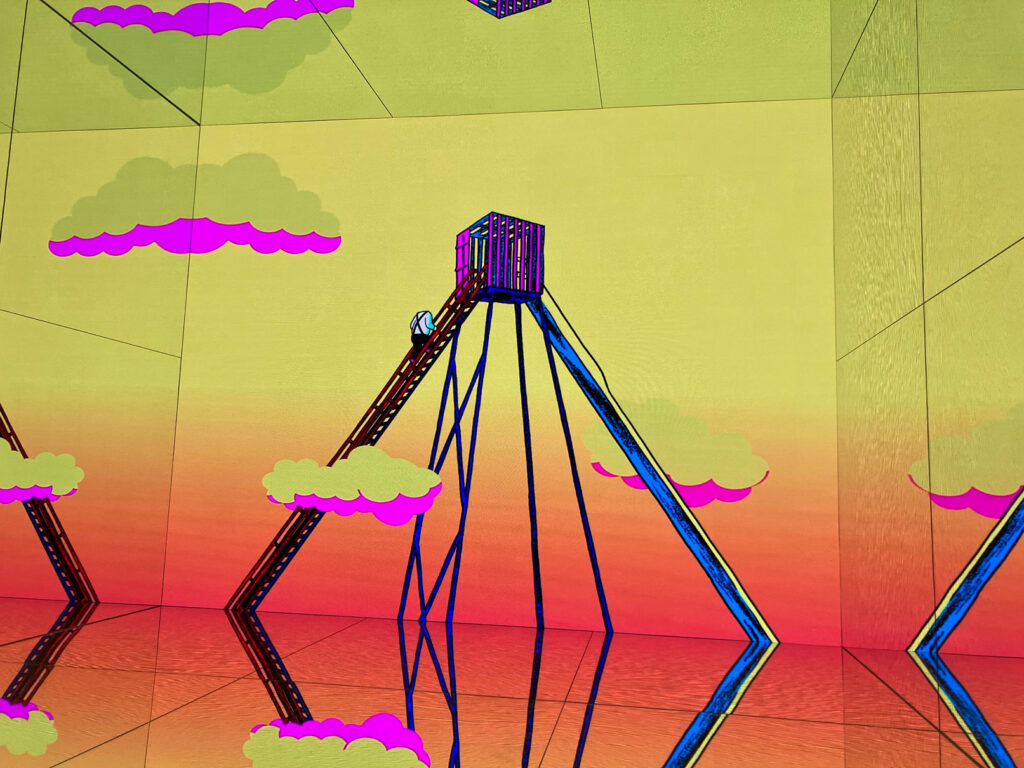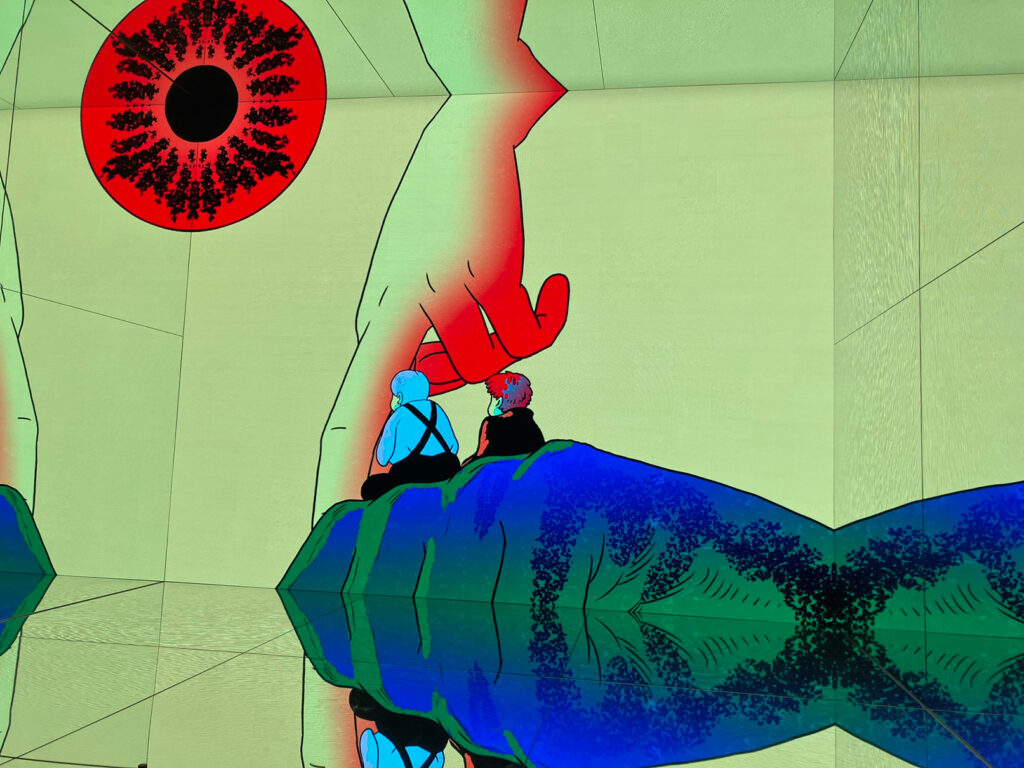【by Vennes Cheng, June 2023】
Gerhard Richter (b. 1932) claimed Art is the Highest Form of Hope in his exhibition catalogue for documenta 7 in 1982; the German artist grew up under the shadow of Nazism in East Germany and his life traces the significant historical ruptures and devastations that brought by the brutality and dictatorship of National Socialism in the wake of Second World War. Richter’s work reverberates with the trauma in abstract manifestations, such as blurring the connotation of historical photography by means of painting, his art practice can be seen as artistic contextualisation of the dark times in history. Thus, art as the highest form of hope, to him, infers not to the saccharine and cathartic manifestations for temporary consolation and escaping despairing reality; it is rather a strength for one to confront and move forward.






Richter’s concept of hope in art resonates the assertions of John Berger and Hannah Arendt that only in the form of energy and action does hope become powerful resistance to the weird and dark inhuman circumstances. Instead of a mere aesthetic and nostalgic strategy, Hong Kong animation artist Kongkee (b.1977) also devises hope as a form of action in his commissioned work for M+ The Flower in the Mirror (2021). The commissioned work is an installation of animation and music, which channels the feeling and relationships of Kongkee – as a Hong Kong animation artist – with his city. The animation is a surreal manoeuvre; it is about some quasi-journeys of a pair of walking fingers and two acephalous figures, who are holding a mis-matched head in their hands, in an ambivalent cityscape of Hong Kong. The usage of intense and luminous colours, which is often seen in Kongkee’s work, is a vivid reminder of Hong Kong was well-known for its neon cityscape. The neon coloured animation is situated in a mirror room, it renders a colourful mirage and gives an initial feeling of brightness, happiness, and hope. This perhaps is the reason for it becoming one of the popular spots for instagram in the exhibition ‘Hong Kong: Here and Beyond’ of the recently opened museum of visual culture. Although The Flower in the Mirror seems to be a work that channels positivity with hope, however the artist mentioned in an interview that the work aimed not as a descriptive representation of hope; rather, the animation installation tells the yearning for hope and manifests a journey of searching, particularly in the post social movements and post covid Hong Kong.
The Flower of in the Mirror artistically epitomises John Berger’s vision of hope as an inseparable from darkest; to him, hope will only be its strongest when it manifests ability to be active and devices transformations. Berger rejected to inform human sentiments during dark times with the binary of optimism and pessimism, but suggested to transform the sentiments into capacity to act; he said in an interview with BBC Radio 4 that ‘(H)hope is not a form of guarantee, it’s a form of energy, and very frequently that energy is strongest in circumstances that are very dark.’ (Staudt, 2011) Hope as a form of energy visualises the notion not as passive expectation of waiting for something good to happen; rather, it proposes active seeking for the longingness. Like the two acephalous figures and the walking fingers in Kongkee’s commissioned work, they keep on moving and searching in the imaginative realm which bears similar features – highway, mountain, harbour, compacted architecture, and neon colours – to the cityscape of Hong Kong. It is not an artwork of vivid aesthetic and nostalgic strategies that merely renders sentiments of happiness and hopeful as means to comfort; rather it informs hope should be taken in the form of action insofar as searching in the animation installation during the despairing moments. The work is a metaphoric manoeuvre on Hong Kong when the city is undergoing drastic socio-political transformations
Berger’s assertion on hope as a form of energy resonates Hannah Arendt’s contempt for the saccharine of hope; to Arendt, hope is a dangerous barrier to acting courageously in dark times. (Rose Hill, 2021) Hope often appears in times of distress of humanity, be it suffering, misery, tragedy, or agony; the worldly circumstances become unbearable and people will turn to hope as refuge for temporary consolation. This preserving of the feeling of hope petrifies the capability of taking action to change the dark circumstances; the suffering remains in victimisation by merely expecting, wherein the possibility of resisting inhuman reality is omitted and changes will not be thrived. Arendt even compared hope to fear and reckoned both of them were among the evils; in ‘On Humanity in Dark Times: Thoughts about Lessing’, she wrote ‘(I)n hope, the soul overleaps reality, as in fear it shrinks back from it’. (Arendt, 1970) Hope is key to escape from reality as it distils unpleasant emotions and comforts the soul, which renders hallucination that circumstances are not that despairing and darkness becomes less unbearable. To Arendt, holding on hope was one of the reasons of Holocaust. She was asked about the sources of helplessness of Jewish people in the Nazist-occupied Europe; Arendt responded and cited the report of Polish poet Tadeusz Borowski during his own stay in Auschwitz:
Never before was hope stronger than man, and never before did hope result in so much evil as in this camp. We were taught not to give up hope. That is why we die in the gas oven. (2007, 494)
Hope trapped humanity in the catastrophe and made the Jewish leadership take an innocent perspective on the perpetrators; hope normalised the Jewish position during World War Two. (Arendt, 2007)
The Flower of the Mirror shares a similar critique to the notion of hope; Kongkee sees hope as an uncertain and hallucinatory manifestation, therefore, to perceive The Flower of the Mirror as an artwork that represents hope is an oversimplified undertaking. The two acephalous figures and walking fingers in the animation work are in search of something; the walking fingers are strollings through mountains, highways, and wasteland; two acephalous figures are running upstair and falling into colourful abyss, they are seemingly searching for their own heads, the two finally meet each other at a kaleidoscopic surrounding. The animation installation is a colourful dystopia that informs the only way to find oneself is to keep searching. The work reveals hope is not a passive expectation and waiting by overleaping reality, only by keeping on searching the two acephalous figures eventually find their own heads and only by action will changes come as Ernst Fischer asserted, ‘all art is conditioned by time, and represents humanity in so far as it corresponds to the ideas and aspirations, the needs and hopes of a particular historical situation. But, at the same time, art goes beyond this limitation and, within the historical moment, also creates a moment of humanity, promising constant development’. (2010, 21) Thus, hope in art in contemporary context goes beyond the aristotelian notion of catharsis, which refers to purification of unwanted and unpleasant emotions during the appreciation of art; rather, it provokes confrontation to reality and incites actions and responses that may possibly make changes to the very dark circumstances.
AUTHOR
Vennes Cheng, Associate Curator, Hong Kong Visual Culture, M+
REFERENCES
Staudt, Kaitlin (2011). “An Uncommon Optimism”: John Berger on BBC Radio 4 and in the Scotsman and the New Statesman. Retrieved on 23rd April, 2023. https://www.versobooks.com/en-gb/blogs/news/576-an-uncommon-optimism-john-berger-on-bbc-radio-4-and-in-the-scotsman-and-the-new-statesman
Arendt, Hannah (1970). ‘On Humanity in Dark Times: Thoughts about Lessing’. Men in Dark Times. 3-31. HarperCollins
Arendt, Hannah (2007). ‘The Destruction of Six Millions’. The Jewish Writing. 490-495. New York: Schocken.
Hill, Rose Hill (2021). When hope is a hindrance. Retrieved on 23rd April, 2023. https://aeon.co/essays/for-arendt-hope-in-dark-times-is-no-match-for-action
2021 年11月19日<為開幕展創作動畫談希望 江記:M+之外更要保持民間活躍土壤> 明報週刊. https://www.mpweekly.com/culture/%E8%97%9D%E6%96%87/%E6%B1%9F%E8%A8%98-m-%E6%B5%B7%E5%B8%82%E9%8F%A1%E8%8A%B1-193302/